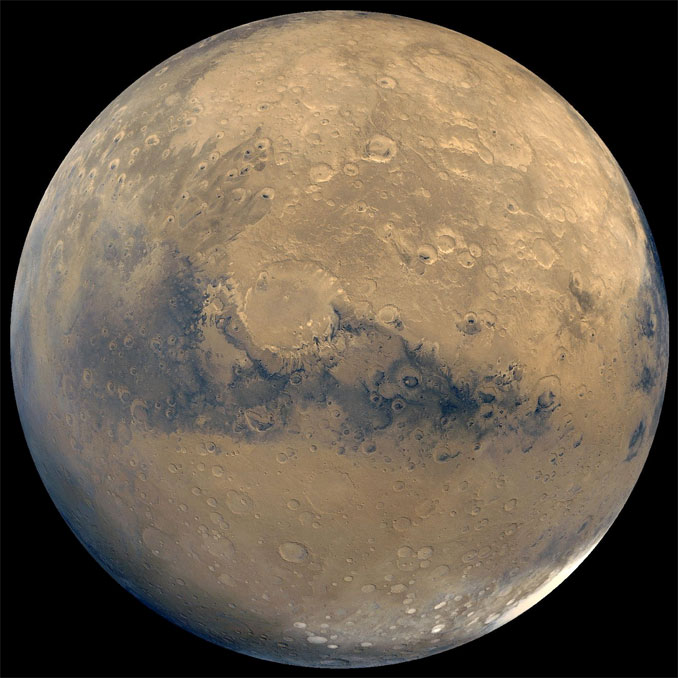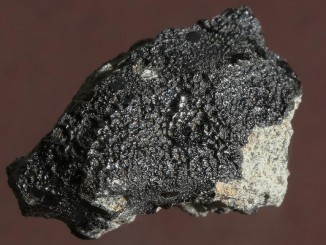
Between 30 percent and 99 percent of the water that once flowed and pooled on Mars, enough to have covered the red planet in a sea 100 to 1,500 metres (330 to 4,920 feet) deep, remains trapped in the planet’s frozen crust, new research suggests. The findings challenge current theory that most of Mars’ water escaped into space over geologic time thanks primarily to the low martian gravity and the effects of the solar wind in the absence of a magnetic field.
There is little doubt Mars was once a warmer, much wetter world with ancient river channels and basins commonplace features. But Mars today is an arid desert, and few doubt that atmospheric escape played a role in climate change on a global scale. But new findings published in the latest issue of the journal Science conclude that does not account for the majority of the water loss.
Combining data collected by multiple Mars spacecraft and meteorite lab analysis, researchers studied the total quantity of water on the red planet across its history in all forms – vapour, liquid and ice – as well as the chemical composition of the planet’s current atmosphere and crust. They focused on the ratio of deuterium to hydrogen.
Most of the hydrogen in water molecules features a single proton in the atom’s nucleus, but a tiny fraction, about 0.02 percent, exists as deuterium with a nucleus containing one proton and one neutron. The lighter hydrogen can escape to space more easily than its heavier cousin, which would have a noticeable effect on the ratio of deuterium to hydrogen in Mars’ atmosphere.
Atmospheric escape along cannot explain the observed deuterium-to-hydrogen ratio and the amount of water that must have been present in the past. The new research suggests a two-mechanism process: atmospheric loss and the trapping of water in the planet’s crust.
On Earth, water trapped in minerals is eventually recycled and released back into the atmosphere through volcanism where continental plates collide and melt back into the mantle. But Mars does not have an active crust and water trapped in its minerals is trapped forever.
“The hydrated materials on our own planet are being continually recycled through plate tectonics,” said Michael Meyer, lead scientist for NASA’s Mars Exploration Program. “Because we have measurements from multiple spacecraft, we can see that Mars doesn’t recycle, and so water is now locked up in the crust or been lost to space.”
The Perseverance Mars rover, which landed on the red planet on 18 February, will collect rock and soil samples from Jezero Crater and cache them on the surface for eventual return to Earth. Eva Scheller, a Caltech Ph.D. candidate and lead author of the paper in Science, along with Bethany Ehlmann, professor of planetary science at Caltech, will aid in the rover’s sample collection. Laboratory analysis of those samples on Earth will no doubt provide fresh insights into the fate of Mars’ lost water.



